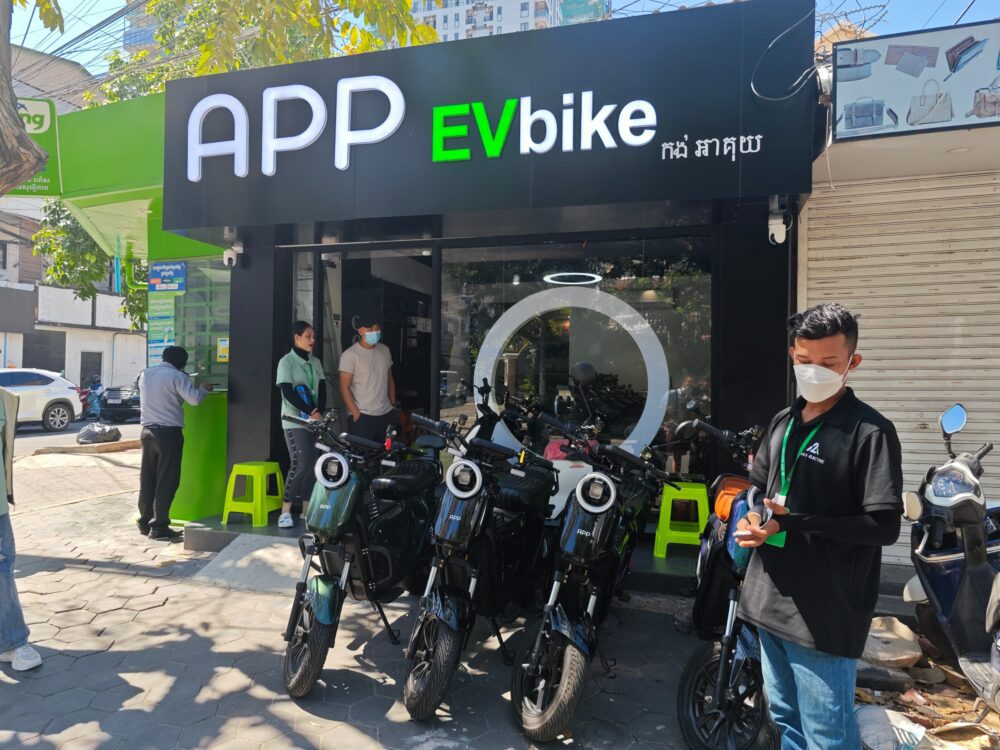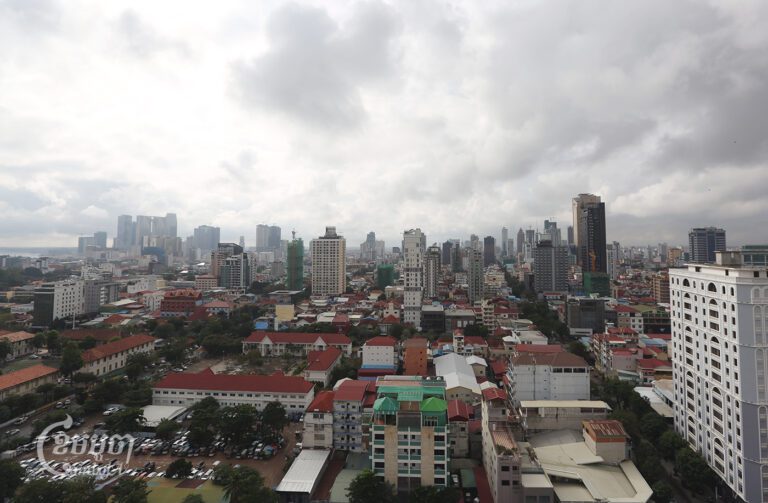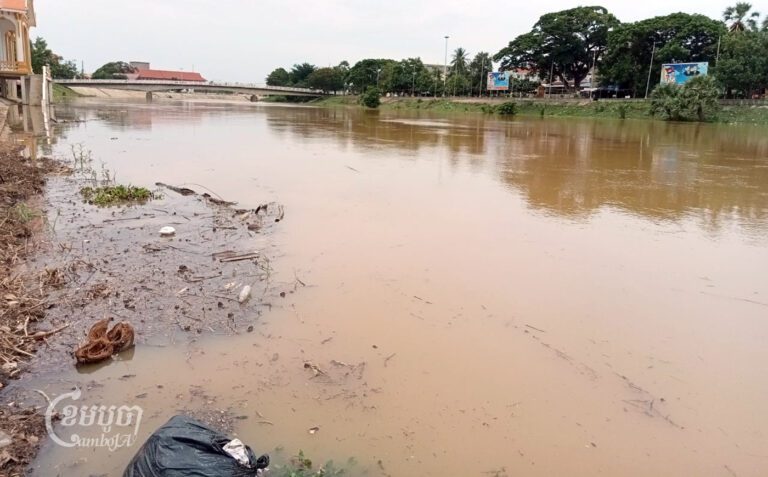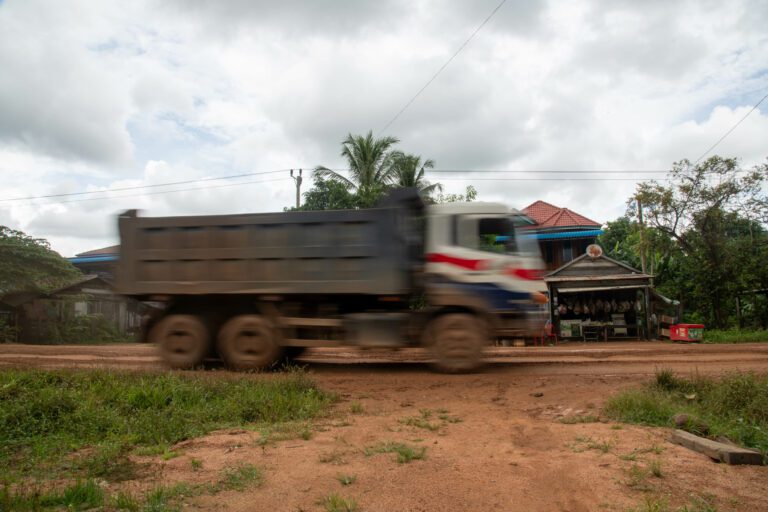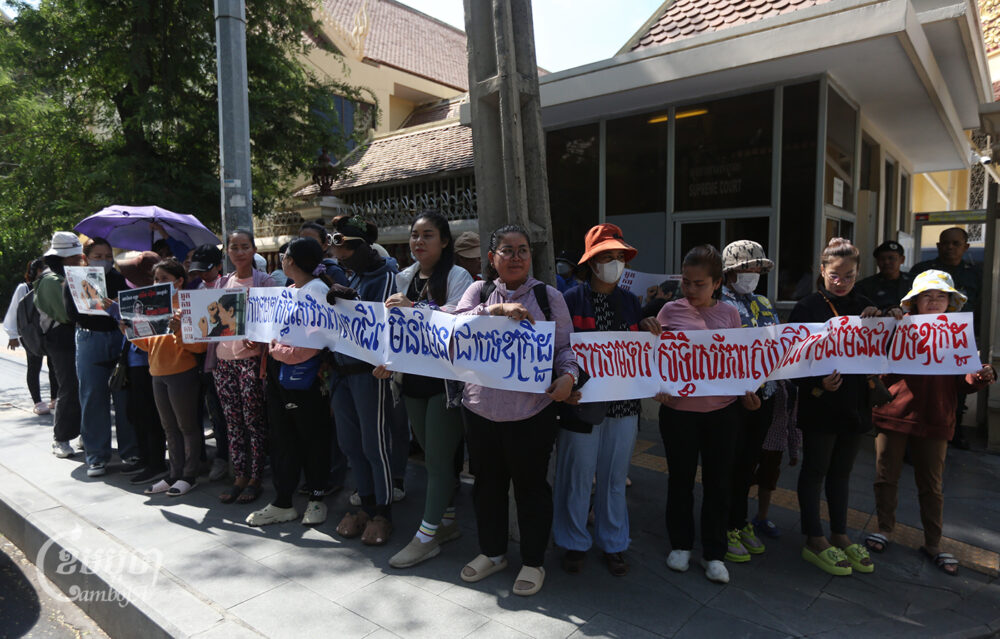Phnom Penh delivery driver Tep Kakada opted to purchase an electric bike eight months ago, after three and a half years of using his petrol motorbike daily. For him, it wasn’t only about the price of gas.
“[Petrol] motorbikes need a lot. They need to have their oil changed, at least two or three times a month,” he said. “It could be $130 to $150 a month depending on how much you drive. With the [electric motorbike] I only pay $80 a month, so it saves me a lot.”
Kakada is not alone. Electric vehicles, or EVs, have grown in popularity in Cambodia following recent international investment and efforts from the government, with registrations nearly tripling from 2022 to 2023. A report published last month by the Ministry of Public Works and Transportation outlines a roadmap for a country-wide network of EV charging stations. Still, with only about 1500 registered EVs in the country, a lack of infrastructure is keeping them from being widely adopted and could slow the pace of the emerging industry.
Kon Seng Horn manages a Phnom Penh shop for NWOW, a Filipino EV company that has opened five locations in the city in the last five years as demand for their scooters, bikes and four wheelers has increased.
“Compared to two years ago, there’s a decent difference [in sales],” she said. “The older customers refer their families and friends to us, so more customers come through that.”
Seng Horn said that early on customers were concerned about buying bikes manufactured in China, but that has become less of an issue as Chinese EVs become more common in the city.
Foreign EV companies, including Chinese ones, have seized on the increased consumer interest, with new dealerships opening up throughout the capital. The Chinese startup App EV Bike, for example, opened a location in Phnom Penh in January, with a goal of getting set up as the industry takes hold in Cambodia.
Adding to the increased international investment, Cambodian government incentives are also drawing buyers to EVs. In 2022, the Transportation Ministry announced a goal to have 40% of vehicles and 70% of motorbikes be electric by 2050. The government has incentivised companies working on electric mobility, with import duties for EVs about half that of traditional vehicles.
Transportation Ministry spokesperson Heang Sotheayuth said in a Telegram message that the government is working to “include additional tax incentives to encourage EV adoption and imports.” The government also established an inter-ministerial committee to make policies related to EVs, which plans to have a policy framework completed by the end of this year. The framework will include details on incentives for imports of EVs, environmental protection measures and potential requirements related to charging stations, he said.
Environment Minister Eang Sophalleth and spokesperson Choup Paris did not respond to requests for comment.
For Andy Chun, general director of the Korean sustainable development company Very Words, the government incentives were a major factor in the company entering the EV industry in Cambodia. The business also received funding from the Korean government to encourage eco-friendly technology in Cambodia.
“It was clear that it was time to transition to sustainable mobility,” he said.
While originally creating solar panels and working on improving electric infrastructure, the company switched to EVs after being encouraged to by Cambodian government officials, he said. The company opened a factory last May for assembling electric motorbikes just outside of Phnom Penh.
So far, the factory has produced 100 bikes as proof of concept, which Chun said sold quickly. The business is currently receiving “many” requests, and the company plans to be able to produce 10,000 motorbikes per year from the factory once it’s fully up and running.

Building Up EV Infrastructure
A lack of charging infrastructure still severely limits the plausible use of EVs anywhere outside of central urban areas. Kakada, the delivery driver, once had to walk his bike back from Phnom Penh’s Chroy Changvar district after running out of charge on his bike. Further out districts including Chbar Ampov and Chroy Changvar don’t currently have any places to swap out electric bike batteries.
Even British Ambassador Dominic Williams, who has been driving an electric Jaguar since arriving in Cambodia, has had challenges charging his vehicle despite a team of staffers involved in his long-distance trips. He said his choice of car is part of an overall British foreign policy of encouraging sustainability through their embassies.
“We were keen to walk the talk on going carbon neutral,” he said to explain the embassy’s policy. “You could do a lot of what you want to do with a vehicle with an electric car.”
At first, he only used the car for rides in and around Phnom Penh. But over time he has started driving it to further out destinations including Siem Reap and Sihanoukville. Still, he said careful planning is required for these trips due to limited charging stations. There is only one charger his car can use in Sihanoukville, for example, which is located in a mall closed from 5 p.m. to 9 a.m. On another trip to Battambang, the charging station his team planned to use was out of order.
More battery swapping businesses are popping up in Phnom Penh, which allow electric bike drivers and electric tuk-tuks to quickly swap out a used battery for a freshly charged one at a station. The company Oyika, for example, has dozens of battery stations around Phnom Penh and an app that features a map showing the number of available batteries at each site.

But battery charging businesses are not without obstacles. While a petrol car can be refilled at any gas station, each EV company in Cambodia uses a different battery, and they often depend on battery charging fees to make a profit. This means that each company needs to build its own battery swapping infrastructure and drivers need to choose specific routes to account for where their company’s stations are.
“We need to discuss standardisation, but it isn’t easy,” Very Words’ Chun said. “Each company has its own business model.”
Plus, these stations need to be staffed well, as drivers don’t always care for rented batteries in the same way they would for one they own. A guard at a Phnom Penh Okiya battery swapping station in January told CamboJA News that customers shove, slam and hit batteries when returning them, especially at night. And even though EVs are somewhat new to Cambodia, his station can’t always accommodate the number of customers arriving to charge vehicles. The guard mentioned that while a battery charging station typically charges six batteries at a time, the one he oversees only accepts four at a time due to the building not having enough electric output to support more.
Other companies are pursuing a plug-in charging model, where the vehicle has one, non-removable battery which the user can charge at any fast-charging station or even home outlet. This type of vehicle requires less complicated infrastructure: low power vehicles such as electric bikes can even use a traditional power outlet. Larger vehicles generally require a specialised charging station to reduce the time required for a full charge. Still, with most charging stations located in Phnom Penh, the utility of EVs is limited.
Looking to the Future
Cambodia is not currently set up for a full switch to EVs. The country’s power grid is able to handle about 4.6 gigawatts of electricity at once, according to a 2023 report by the Electricity Authority of Cambodia (EAC), less than the amount needed to charge around 100,000 electric cars.
But most Cambodians would only be able to afford an electric bike, which can consume as low as two kilowatts of electricity, the amount consumed by the average air conditioner, according to Dean Rizzetti, energy policy director at the NGO Energy Lab Cambodia. An advantage of EVs is that they can store electricity that is generated during low demand periods and use that electricity during a high demand period without burdening the power grid at a difficult time.
“When the sun is shining, your car can be charged and when there’s less renewable energy the charging can stop,” he wrote in an email.
Cambodia’s electrical output capacity has increased by about 25% in the last two years according to the EAC. Dean sees the barriers to wide-adoption of EVs as surmountable, as infrastructure improvements are relatively affordable and will result in major savings for drivers and a reduction in air pollution.

American University of Phnom Penh professor Riccardo Corrado, who researches information and communication technology for development, has more tempered expectations for the EV industry in the Kingdom.
“Streets outside of Phnom Penh are still lagging and thinking about EV infrastructure could be premature,” he said in an email, adding that Cambodia should possibly “focus on more tangible issues, and step by step create an ecosystem where energy production and distribution, skilled workforce, education, and healthcare system, are the priorities.”
Corrado noted that even the most developed countries in the world have yet to settle on the best practices for EVs. Rushing to celebrate EV usage in Cambodia and the desire to declare EVs a solution to transportation issues could be misguided, he said.
The Cambodian government is moving full charge ahead with its goals for EVs, even predicting over one million electric two and three-wheelers on the roads by 2040. The reduced costs of electric charging compared to filling up a tank of gas are alluring for customers. But until there’s more accessible infrastructure, the delivery driver Kakada, for his part, is still holding on to his petrol motorbike.
Additional reporting by Leila Goldstein.


